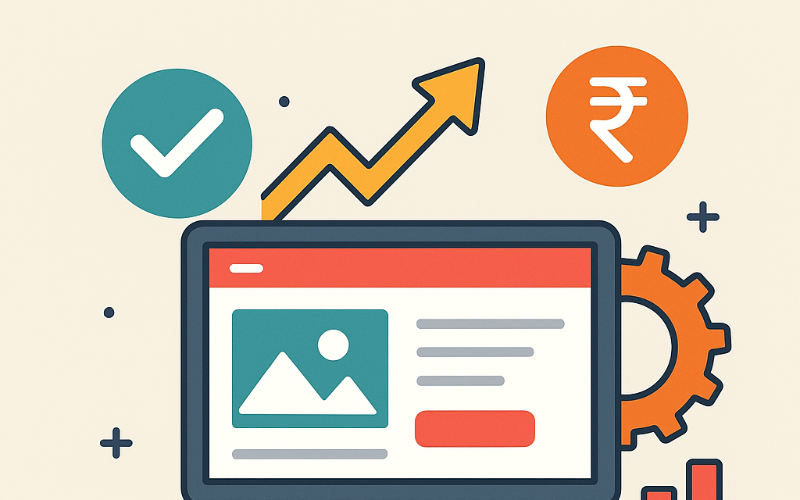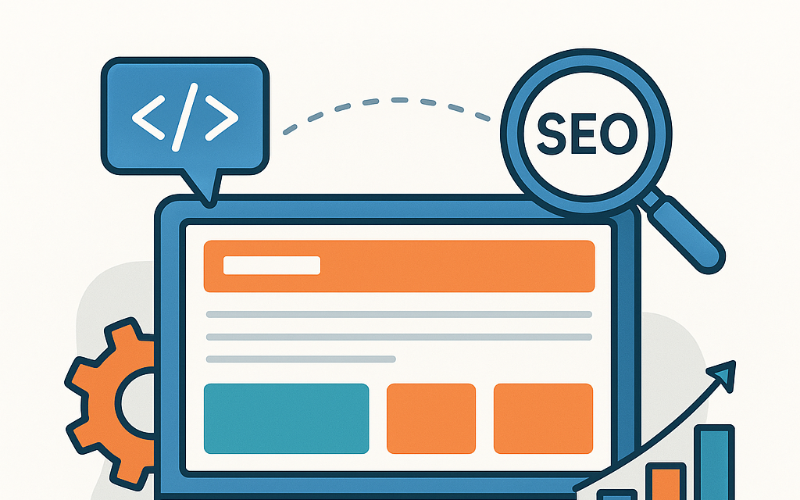29.10.2025
Understanding the Shift: What is a Headless CMS?
In today’s digital world, the term headless CMS refers to a content management system that decouples the content backend (where you create and manage content) from the front-end presentation layer (where that content is rendered to a user). Unlike traditional (“monolithic”) CMS platforms—where the site theme, content engine and front-end are tightly integrated—headless CMS platforms treat the front-end (“the head”) as separate or even absent, and content is delivered via APIs to any channel.
Why does this matter? Because digital experiences now span far beyond just websites: mobile apps, kiosks, voice assistants, IoT devices, wearables and more. Content needs to be reused, repurposed and delivered consistently across all these touchpoints. A headless CMS enables a “publish once, deliver anywhere” model: create your content in a central hub and distribute it via API to whichever channel you choose.
For many businesses, this architectural model offers future-proofing: the front-end framework or device might change tomorrow, but the content repository remains intact. That separation gives flexibility, scalability, and adaptability—something increasingly important in 2025.
Market Adoption and Growth in 2025
The numbers speak volumes. The global headless CMS market is projected to grow from about US $469 million in 2025 to about US $1.391 billion by 2032, with a CAGR of around 22% during that period . Another report places the value in 2025 at approximately US $973.8 million, heading to over US $7.11 billion by 2035 .
In terms of adoption: In one survey, around 77% of Dutch companies plan to migrate to a new CMS, and many attribute performance, scalability, and developer/editor collaboration benefits to headless CMS adoption . Meanwhile, older data show 39% of businesses plan to evaluate headless CMS in the next year, and 81% agree that failing to move to component-based headless approaches may leave them behind .
Regionally, Asia-Pacific is emerging as a strong growth market—with the shift to headless CMS adoption growing fast in countries like India, China and other emerging markets.
All of this shows that migrating to headless CMS is no longer niche: by 2025 it is a mainstream strategic move for organisations looking to modernise their digital experience stack.
Key Drivers for Migration
- Omnichannel content delivery demands: Consumers today engage with brands across websites, mobile apps, voice assistants, smart devices, kiosks, and more. Traditional CMS platforms are often designed for the web first and struggle to deliver content efficiently across other channels. Headless CMS solves this by enabling one content source to feed many front-ends.
- Performance, scalability and future-proofing: With front-ends built using modern technologies (React, Next.js, Vue, etc.) and content delivered via APIs, businesses can optimise for speed and scale without rebuilding the backend.
- Developer freedom and modern tech stacks: Developers prefer to work with frameworks and tools they know, rather than be locked into a CMS-provided theme. Headless architecture allows that freedom.
- Integration with AI and automation: By decoupling content from presentation, headless CMS platforms become more amenable to automation, personalization, AI-powered workflows, and integrations with analytics systems.
Top 2025 Trends in Headless CMS
- Composable, MACH and API-first architectures: Headless CMS fits into the MACH (Microservices, API-first, Cloud-native, Headless) world, allowing best-of-breed tech stacks.
- Low-code / no-code meets headless: Platforms now provide drag-and-drop interfaces and visual editors, empowering non-developers to work within a headless architecture.
- AI-assisted content workflows: CMS vendors are embedding AI for auto-tagging, content summarization, metadata suggestions, and personalization.
- Developer-first and editor-friendly models: Modern platforms balance API flexibility with strong WYSIWYG experiences.
- Specialised headless CMS for verticals: Niche solutions for e-commerce, IoT, and digital signage are emerging.
Benefits for Businesses Migrating to Headless
- Faster time-to-market: Independent backend and frontend layers allow quicker iteration and launches.
- Content reuse across channels: One content repository can feed multiple front-ends (web, mobile, IoT), avoiding duplication.
- Better alignment between dev & marketing: Developers can innovate freely while marketing focuses on content.
- Improved performance and ROI: Better optimization leads to faster pages, improved SEO, and conversions.
- Future-proofing: Content layers remain stable even if front-end tech evolves.
Challenges & Considerations Before Migrating
- Technical complexity and team readiness: Requires advanced architecture and developer involvement .
- Cost considerations: Initial setup, integrations, and API costs must be planned Stats Market Research).
- Content authoring experience: Ensure strong preview and editorial tools.
- Vendor/platform selection and lock-in: Choose scalable, open, and well-supported platforms Stats Market Research).
Best Practices for a Successful Migration
- Establish a clear content strategy.
- Select the right front-end + CMS combination.
- Involve both development and editorial teams early.
- Migrate in phases or run a pilot.
- Define KPIs and measure success.
- Provide training and governance.
What This Means for Organisations in India & Emerging Markets
The Asia-Pacific region is witnessing rapid headless CMS growth, driven by mobile-first behaviour, localization, and multi-language needs.
Headless CMS enables easier multilingual content management, flexible integrations, and faster performance—key for markets like India, China, and Southeast Asia.
For startups, low-code/no-code options reduce technical barriers, while CDNs and static front-ends ensure reliable delivery even on slower networks.
Future Outlook Beyond 2025
Expect more use of edge computing, 5G/6G, AR/VR, and IoT channels. Headless CMS will evolve toward AI-driven content orchestration, blending with DXPs for data and automation integration .
Businesses that delay migration risk being locked into outdated systems, slower innovation, and reduced ROI. The 2025–26 period marks a critical pivot for digital modernization.
FAQs about Headless CMS in 2025
Q1. What exactly is a headless CMS and how is it different from a traditional CMS?
A headless CMS decouples the backend from the frontend. You manage content centrally and deliver it via APIs to any channel.
Q2. Why are more businesses migrating to headless CMS in 2025?
To support omnichannel delivery, enhance developer flexibility, speed up deployment, and future-proof content infrastructure.
Q3. Are there any downsides or risks?
Yes — it involves more upfront integration work, management of multiple frontends, and platform selection challenges.
Q4. Does headless CMS work for small companies?
Absolutely. Thanks to low-code/no-code solutions and SaaS models, even small firms can leverage headless CMS effectively.
Q5. How can a business decide if migrating is right for them?
Assess whether you need multi-channel delivery, faster updates, or modern frontend frameworks. If yes, headless is likely a fit.
Q6. What should I look for when selecting a platform?
Focus on API flexibility, editorial tools, scalability, and integration capabilities to avoid vendor lock-in.
Conclusion
In 2025, migrating to a headless CMS is no longer optional—it’s a strategic necessity. It offers agility, scalability, and adaptability that traditional CMS systems cannot match. Businesses embracing headless today will be better prepared for tomorrow’s digital demands.






